Force 10 is the higher end offering in UK camping stalwart Vango’s range of backpacking tents and the Xenon UL2 model is a longstanding favourite.
It’s a classic twin-skinned, two-pole tunnel tent with a single doorway and vestibule. It’s a tried and tested design that remains popular with many backpackers and wild campers, since you get good space-to-weight, easy pitching and proven performance in changeable weather.
It’s not a freestanding design, so you do need secure pegging points and solid ground for maximum stability. The limited ventilation can also sometimes cause condensation.
On the other hand, it’s a great choice for cold conditions and exposed pitches, since the tent pitches all in one. This makes it quick to erect and easy to keep the tent inner dry, which is very practical for wet weather use.
The full fabric inner ensures plenty of warmth in colder conditions, and once firmly anchored the tent is extremely stable. Provided you orientate it tail-first into prevailing winds, it also sheds wind very well.
It's decently liveable too, with plenty of length and good headroom. The inner feels cosy and protective, with useful pockets for stashing camping essentials.
Pros
- High hydrostatic head ratings (3,000mm fly, 6,000mm groundsheet) ensure good waterproof performance
- Pitches all-in-one: Quick to pitch whilst keeping the inner dry – ideal for wet weather use
- Lightweight and compact: sub-2kg trail weight and small packed size
- Full fabric inner feels cosy and warm in colder conditions
- Decent liveability with good length, adequate headroom and functional vestibule space
- Great value: performs comparably to more expensive competitors
Cons
- Single door and vestibule limits access and storage, which is less convenient for two people
- Non-freestanding design requires secure pegging and suitable ground
- Limited airflow and small vents can lead to condensation in humid conditions
- Tapered foot end and sloped ceiling reduces comfort and space at the foot of sleeping area
- Sil-nylon flysheet can sag when saturated, so may require re-tensioning during sustained downpours
| RRP: | £339.99 |
| Internal dimensions: | (L x W) 230 x 130cm (tapers to 80cm at foot) |
| Peak height: | 100cm |
| Packed size: | 40 x 13cm |
| Trail weight: | 1.9kg/4lb 3oz |
| Doors: | 1 |
| Porches: | 1 |
| Design type: | Non-freestanding |
| Materials: | PowerLite Plus 7001-T6 aluminium alloy poles x 2, Protex 15.SRN sil-nylon fly (3,000mm HH), 70D ripstop nylon 6 groundsheet (6,000mm HH), 15D nylon solid/mesh inner |
Shape, structure, pitching, and internal livability
This is a classic double-skinned, two pole tunnel tent. This type of design has many well-established benefits, namely a superior space-to-weight ratio, ample headroom and good wind-shedding ability, at least when pitched facing end-on into prevailing winds.
Obviously, it isn’t freestanding, but it pitches all-in-one, which is ideal for setting up in the rain, whilst also ensuring minimal fuss. It does need pegging out securely, but tensions easily, with super-strong guylines and non-slip, locking runners.
Once inside, it offers generous length and width (230 x 130cm), though the sidewalls taper to about 80cm at the foot end. The tent ceiling slopes fairly sharply at this end too, which does reduce headroom and means you'll have to be careful not to let the footbox of your sleeping bag touch the inner tent walls during the night.
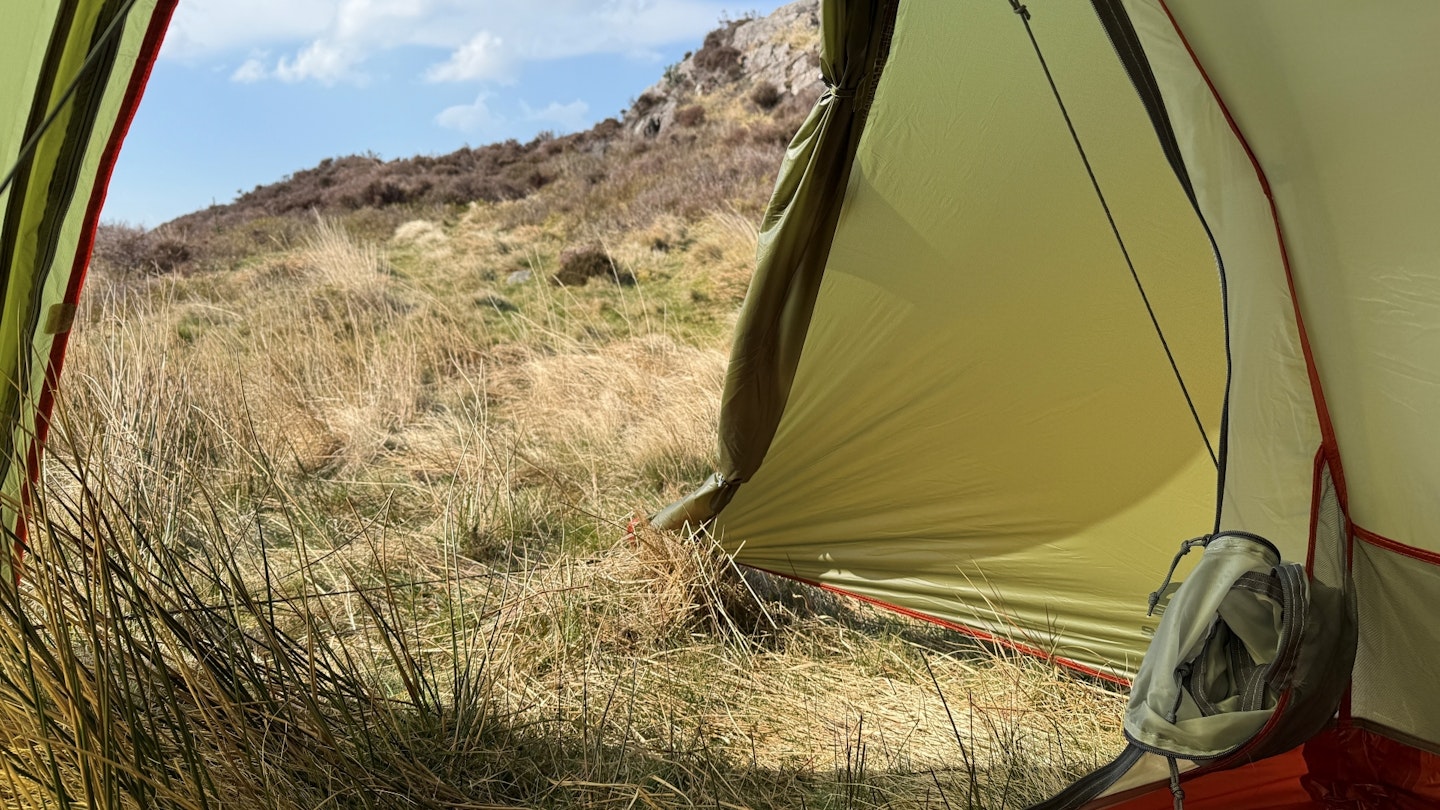
However, there’s 100cm of headroom in the front half of the tent, which combines with a decent porch to give good all-round liveability. On test, we found there was enough space in the vestibule for two pairs of boots and two rucksacks, while still leaving a little space for cooking gear.
The obvious limitation, as is the case with most tunnel tents, is that you only get a single porch and one doorway, making getting in and out a bit trickier, especially if you're camping with a partner.
Waterproofing
This is an extremely weatherproof tent. The flysheet is made from Protex 15D silicone-coated nylon, giving a waterproof rating of 3,000mm Hydrostatic Head. Meanwhile, the bathtub floor is made from 70D ripstop nylon 6, giving a very high waterproof rating of 6,000mm Hydrostatic Head.
This is clearly an impressive wild camping tent that’s been designed and specified with damp, rainy conditions in mind – pretty much perfect for backpacking and wild camping in places like North Wales, the Lake District and the Scottish Highlands. It would also be a good choice for trekking in Scandinavia and other predominantly wet climates.
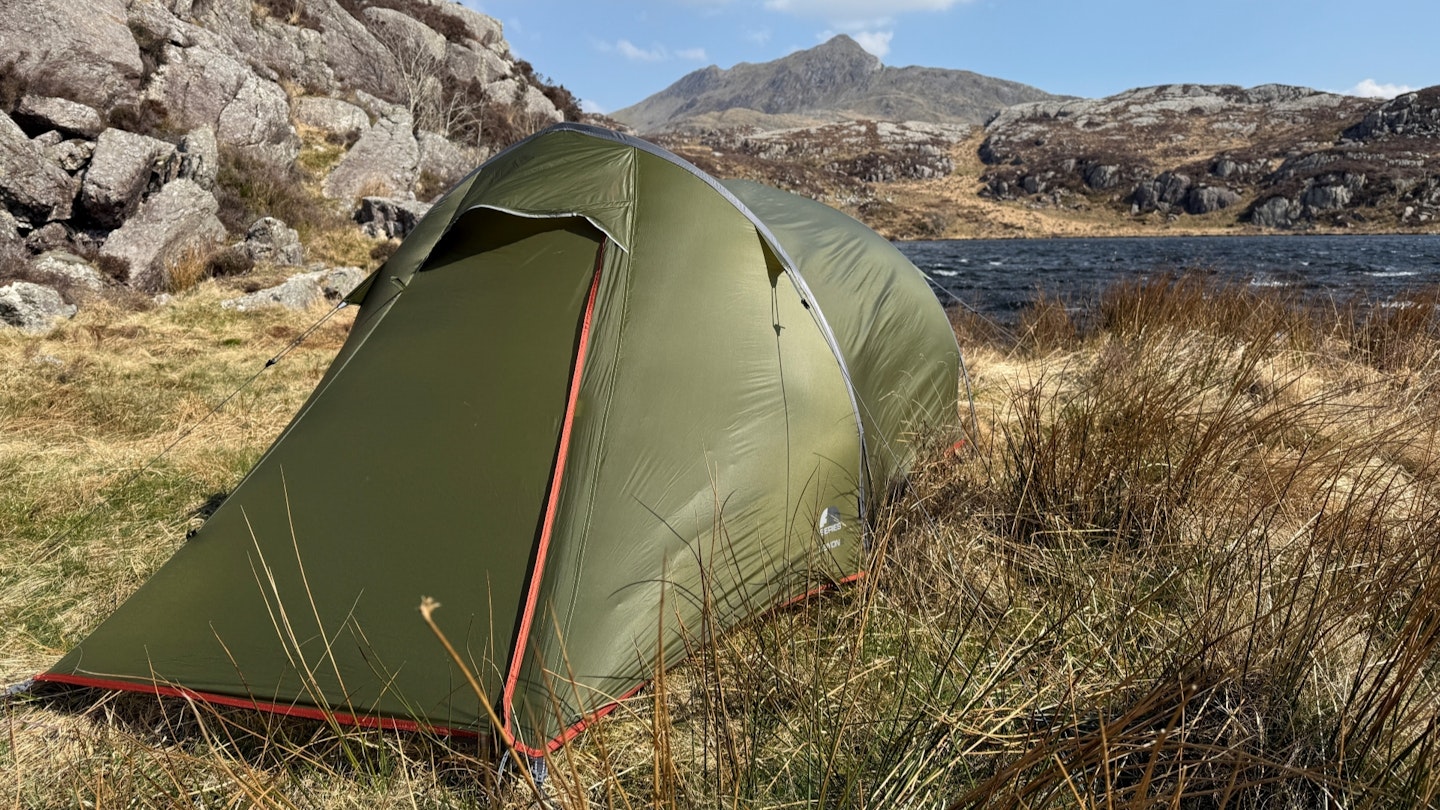
The only thing worth noting is that sil-nylon fly sheets tend to sag when wet, which means you may occasionally need to re-tension the tent in sustained downpours (not the nicest prospect when it’s absolutely tipping it down).
Condensation
Many tunnel tents suffer from limited ventilation and unfortunately the F10 Xenon UL2 is no exception. Airflow is not this tent’s strong point. There are upper vents in the door and at the foot end, but they are fairly small.
The inner is also almost entirely fabric rather than airier mesh. As such, condensation can be a problem on humid nights. On the other hand, these drawbacks become a positive boon if camping in cold weather, because the tent feels warm, cosy and not at all draughty.
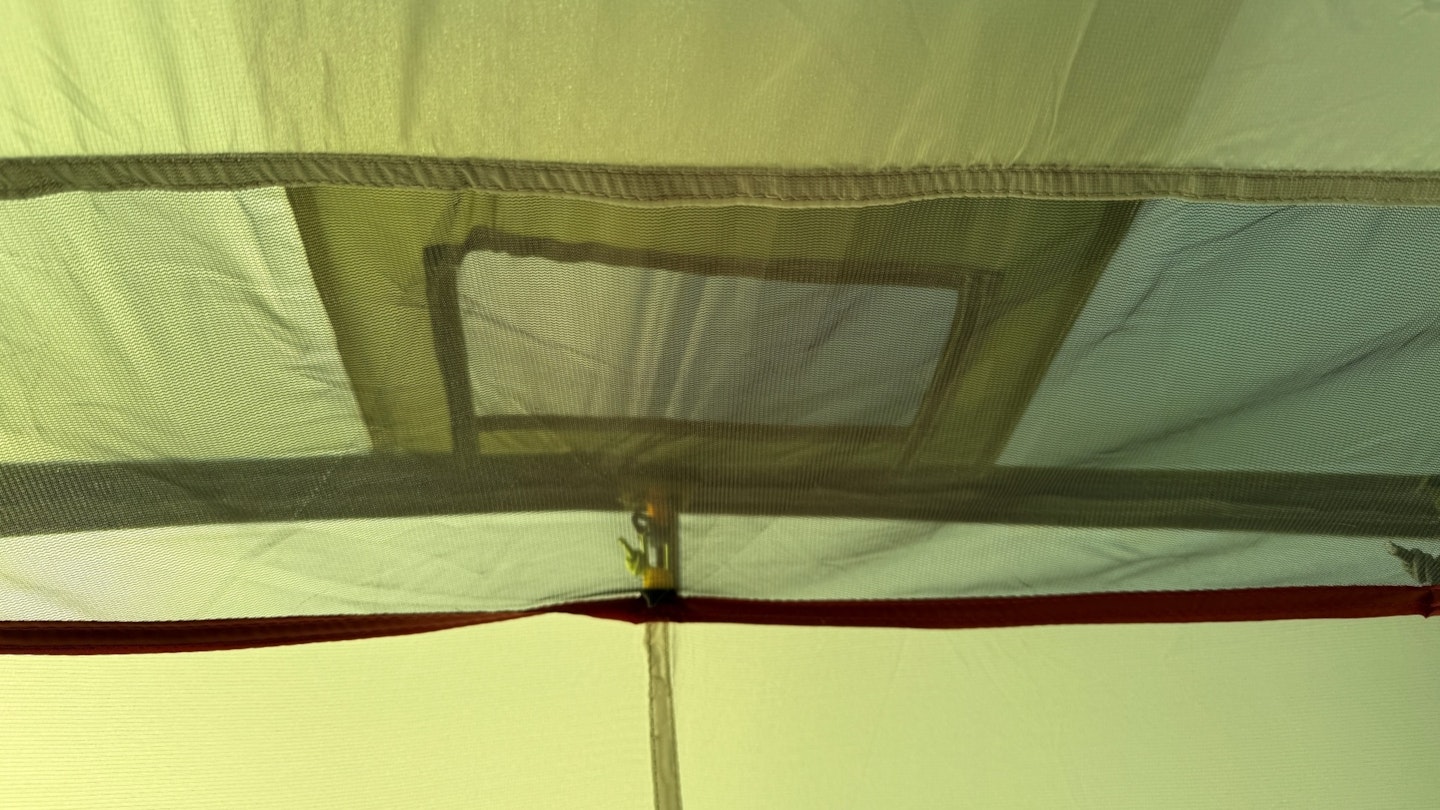
Wind protection
The tent is made from lightweight 15D fabrics, and we were concerned it would be a bit flappy in high winds. However, we pitched our test sample in gusty conditions in the shadow of Cnicht, in the heart of Eryri (Snowdonia) in early April, and the tent held up impressively well.
This is thanks not just to the lower profile of the tunnel design, which, when pitched tail into the wind, ensures excellent wind shedding ability, but also thanks to the ability to get a very taut pitch.
Vango's TBS (tension band system) also adds noticeable extra stability to the two arched poles, thanks to the internal nylon cords that can be tensioned as required.
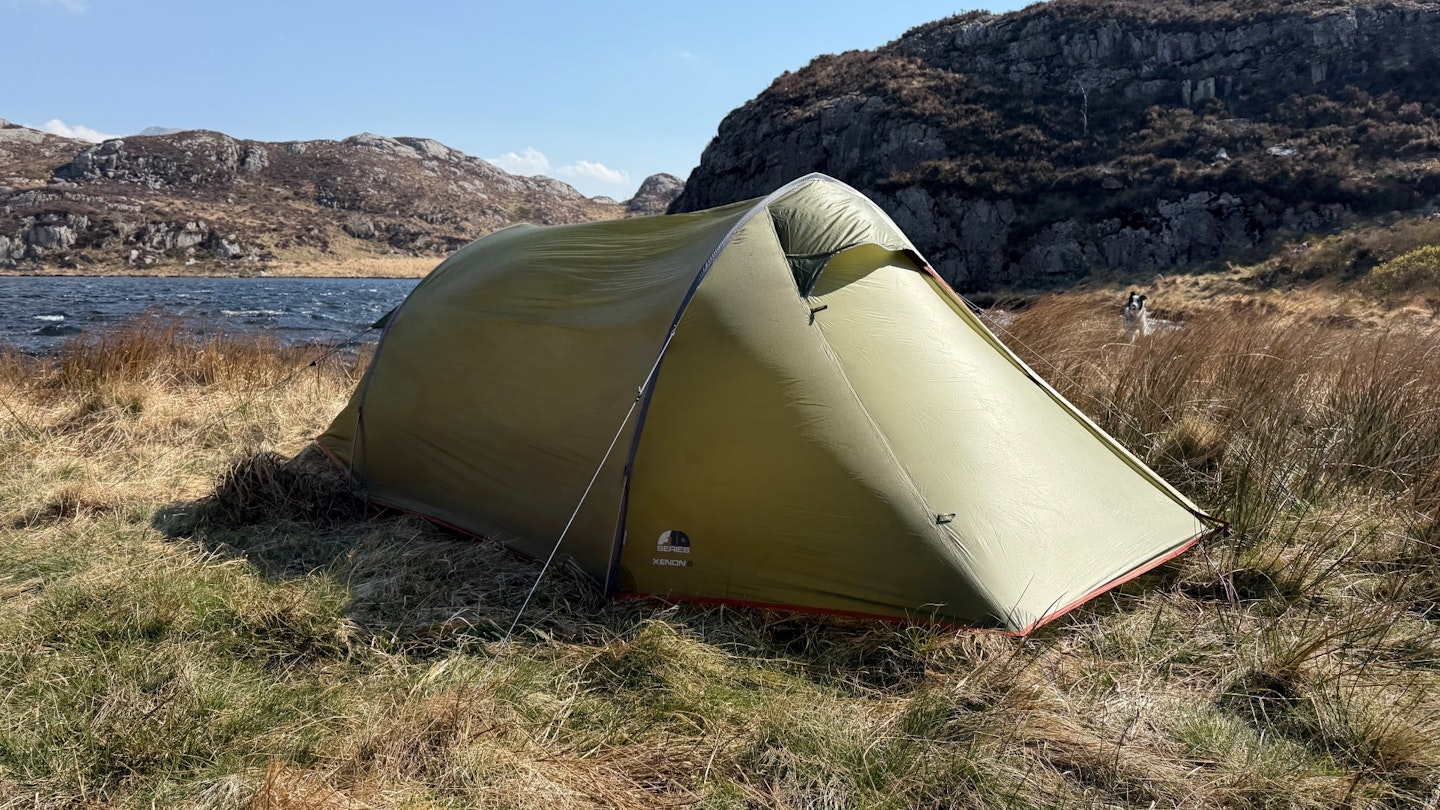
It has plenty of well-positioned guy lines to anchor the tent securely, and the fact that it can be pitched all-in-one enables you to get it up quickly with minimal flapping.
You also get a generous quantity of simple but effective V-stakes with the tent, which provide decent holding power in mixed ground conditions from moderate to very firm soil.
Weight and packed size
The Xenon UL2 has a very practical ‘burrito’ style storage bag, fitted with compression straps. This ensures it’s quick and easy to pack down.
Cinch in those straps and it compresses to dimensions of 40x13cm. This is a very competitive packed size for a double-skinned, two-person tent. It should fit easily into most backpacking rucksacks.
Overall packed weight is also good at 1.9kg. This is on a par with other high-spec tunnel tents such as the Wechsel Tempest 2, the Hilleberg Anjan 2 GT and the Fjällräven Abisko Lite 2.
Admittedly, all of those are a bit bigger and therefore more liveable than the F10 Xenon UL2, but they’re also considerably more expensive. So are lighter tunnel designs like the Nordisk Halland 2 LW or the Hilleberg Anjan 2.

The F10 Xenon UL2 is also considerably lighter than one of our favourite tunnel tents of recent years, the MSR Tindheim 2 – though it is smaller and more cramped inside.
Features
The tent has some intelligently designed features that are well-adapted for life on the trail. These help to offset the limitations of the single-door, single-porch configuration.
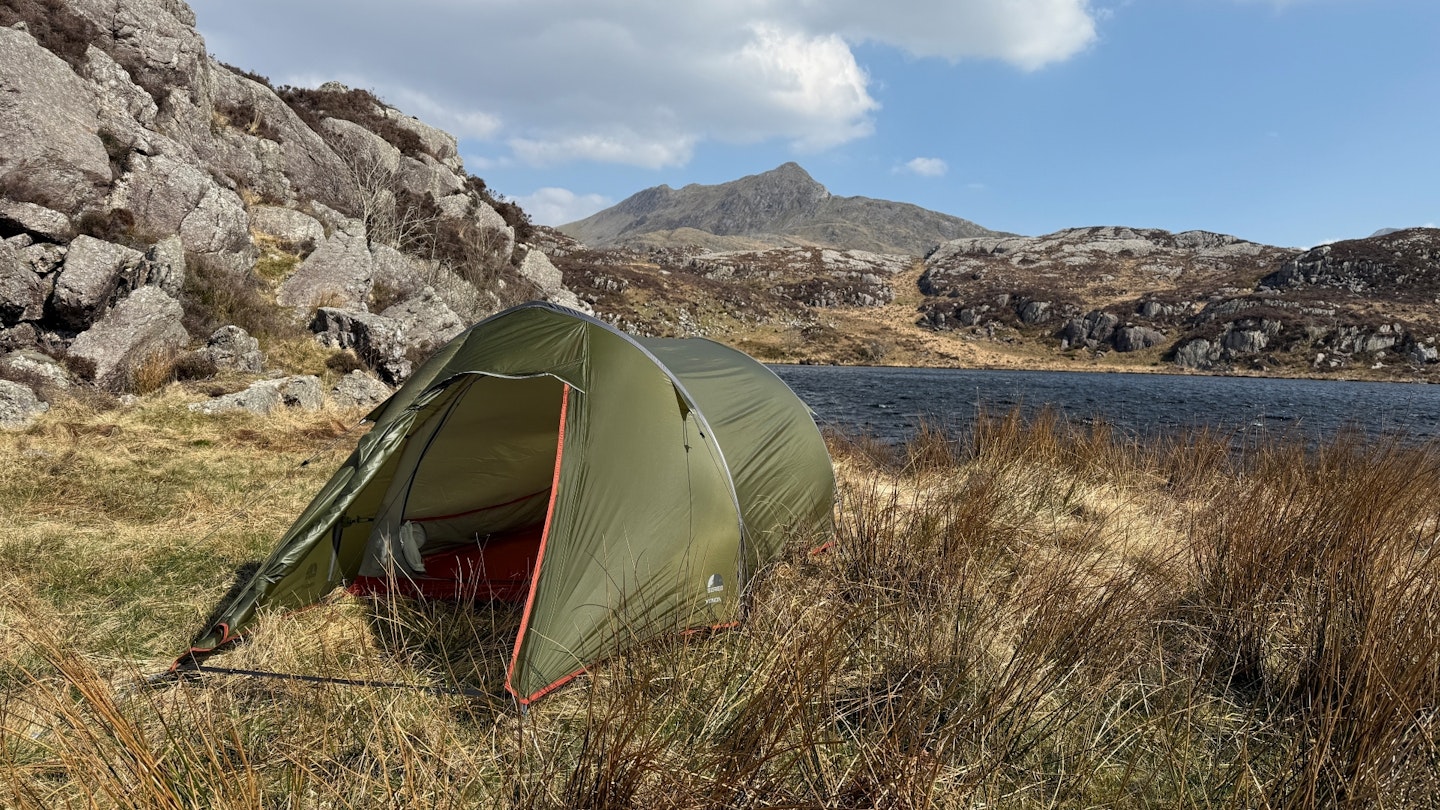
The doorway isn’t the widest but is fitted with a two-way zipper and a bottom clip to prevent zip creep in windy weather. It also has a slight canopy or hood, which works with the vertical inner door to stop water dripping down into the tent. As such, if you’re forced to wait out a rainstorm, this is a nicer space to shelter in than most.
Despite weighing under 2kg it also feels very protective, and the use of arched rather than hooped poles create slightly steeper walls that improve water run-off as well as giving a bit more internal headroom.
Inside, there are four large mesh pockets along each side of the tent, giving excellent storage for smaller essentials. A triangular pocket also provides a place to stuff the door.
There are a further two triangular mesh pockets in the ceiling, which provide a good space to keep a head torch for use as a camping lantern.
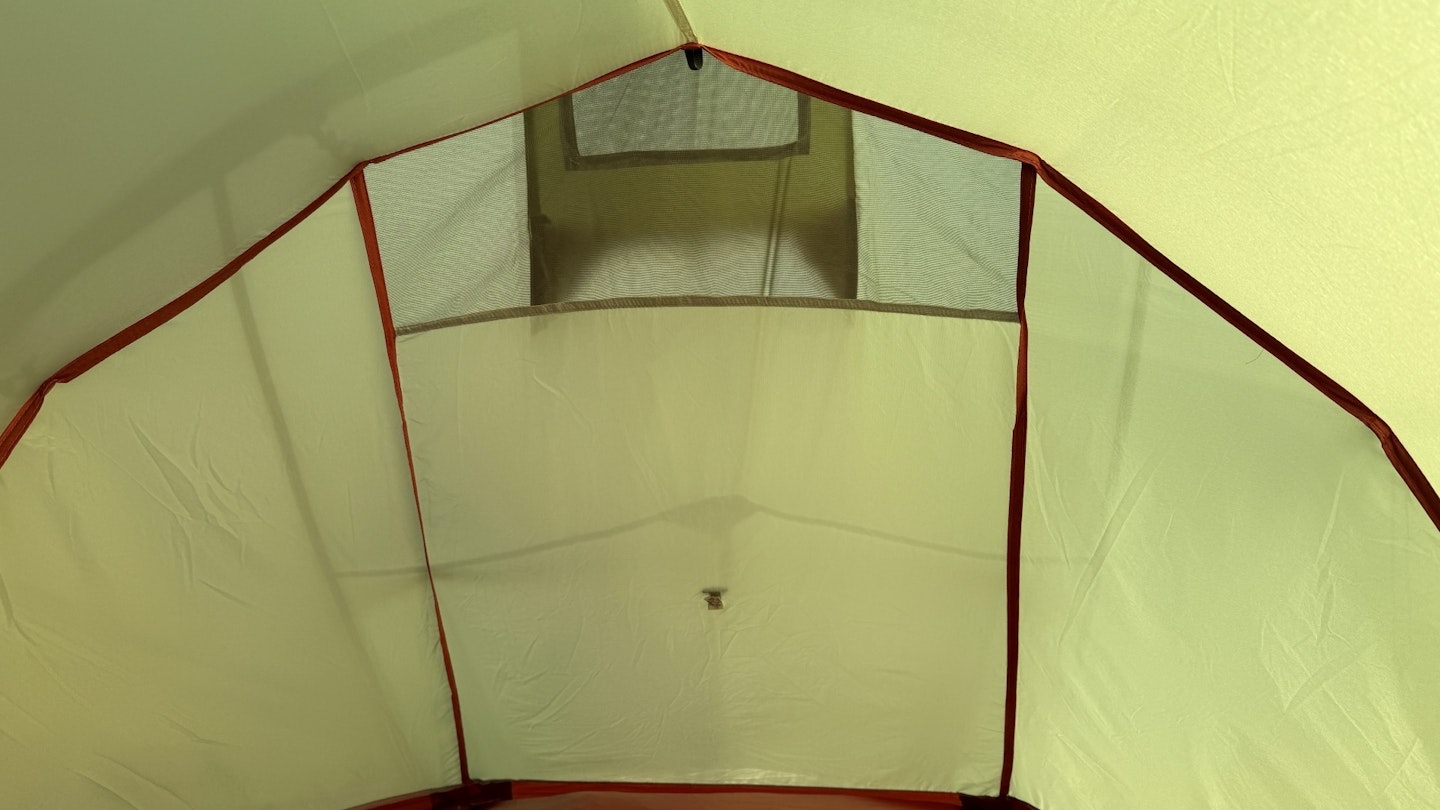
Verdict
A well-designed, weatherproof tunnel tent that offers excellent performance in wet and windy conditions, making it ideal for British backpackers. While it’s not the roomiest or best-ventilated tent overall, its lightweight build, all-in-one pitch and great value make it a solid choice for full three-season use.
If you're looking for more space, check out our roundup of the best 3-person tents.
Shop this product
About the author

Matt Jones is a freelance journalist based in the heart of Snowdonia National Park, he’s a vastly experienced gear tester and self-confessed outdoor kit geek. Matt’s been one of our main gear testers for the last couple of years and is the first person we call with any complicated kit queries that need in-depth and forensic analysis.




